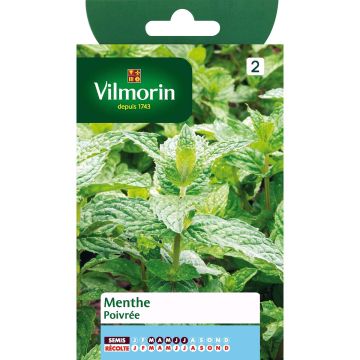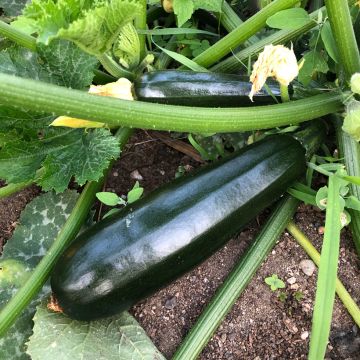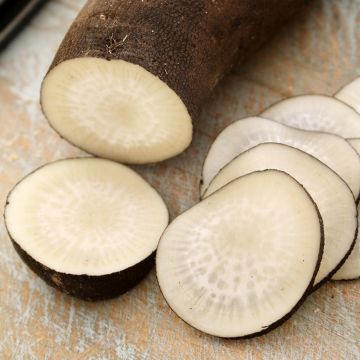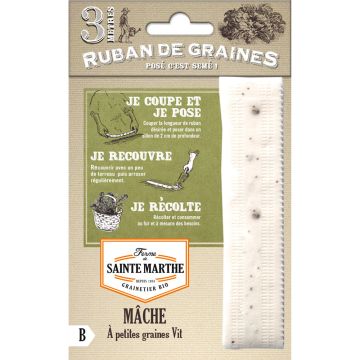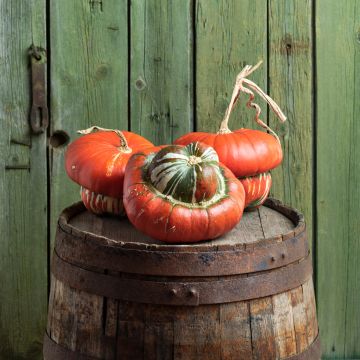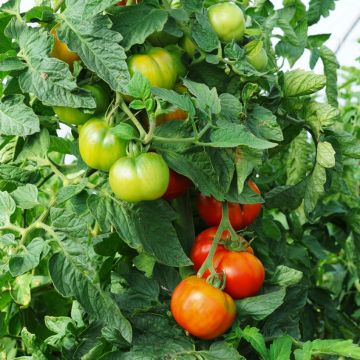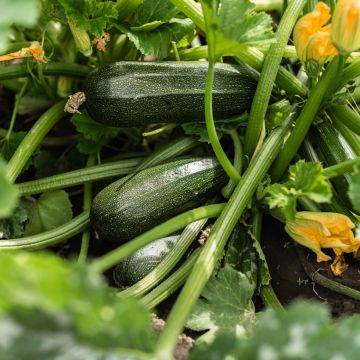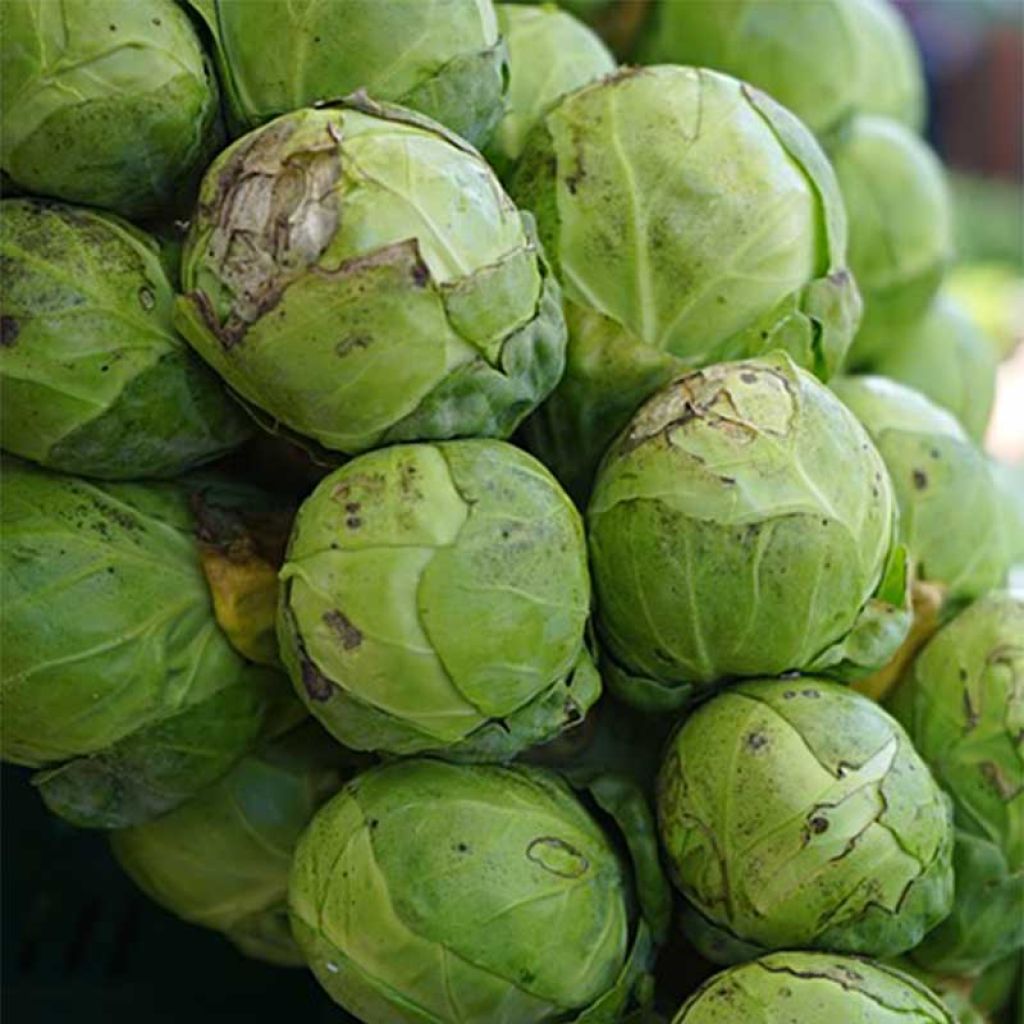

Brussels Sprout Sanda Half-Dwarf - Brassica oleracea gemmifera
Brussels Sprout Sanda Half-Dwarf - Brassica oleracea gemmifera
Brassica oleracea gemmifera Sanda
Brussels Sprout
Good germination and beautiful plants ready to yield this autumn-winter
Mylène B., 17/09/2020
Special offer!
Receive a €20 voucher for any order over €90 (excluding delivery costs, credit notes, and plastic-free options)!
1- Add your favorite plants to your cart.
2- Once you have reached €90, confirm your order (you can even choose the delivery date!).
3- As soon as your order is shipped, you will receive an email containing your voucher code, valid for 3 months (90 days).
Your voucher is unique and can only be used once, for any order with a minimum value of €20, excluding delivery costs.
Can be combined with other current offers, non-divisible and non-refundable.
Home or relay delivery (depending on size and destination)
Schedule delivery date,
and select date in basket
This plant carries a 6 months recovery warranty
More information
We guarantee the quality of our plants for a full growing cycle, and will replace at our expense any plant that fails to recover under normal climatic and planting conditions.
Description
The Sanda semi-dwarf Brussels Sprout is an improved variety derived from the Rosny Brussels Sprout, which has a semi-dwarf habit. It is a rather late and hardy cabbage that produces small, firm green heads. Sow from March to April for a harvest from September to December.
Brussels Sprouts are a vegetable whose axillary buds, forming small heads also called sprouts, are consumed. This biennial vegetable, cultivated as an annual, belongs to the large Brassicaceae family (formerly Cruciferae).
Originating, unsurprisingly, from Belgium, this cabbage is a hybrid developed in the 14th century by market gardeners from Saint-Gilles (a municipality in the Brussels suburbs) who were concerned with increasing their productivity. Indeed, growing vertically, Brussels Sprouts take up little space on the ground and allow for abundant harvests in a minimum of space.
An autumn and winter vegetable par excellence, Brussels Sprouts have a mild, slightly sweet and very comforting flavour. Carefully cooked, their delicate taste pairs well with bacon, lard, smoked pork belly, and chestnuts. They can be cooked, sautéed, braised, or even gratinéed... Quickly steamed, they are also excellent cold in salads. They are a vegetable rich in fibre, antioxidants, and vitamins C and B.
Brussels Sprouts are a much less demanding vegetable than the majority of cabbages. They thrive in the sun and in moderately rich soil, especially in nitrogen. A soil that is too generously fertilized would result in the production of small, open, or burst heads.
Harvest: Brussels Sprouts are harvested by starting from the bottom of the stem and cutting the small heads with a knife.
Storage: Brussels Sprouts can be stored for 3 to 4 days in the vegetable drawer of the refrigerator. They can also be frozen very well after being blanched for 3 to 5 minutes in salted boiling water.
Gardener's tip: The main enemy of cabbage is the Cabbage White Butterfly (Pieris brassicae), a beautiful cream-white butterfly with small black spots that wakes up from April-May to wreak havoc on its leaves. Don't be caught off guard and opt for prevention by installing an insect-proof net, tightly sealed on market garden hoops. These nets are easy to set up and reusable to protect, for example, your carrot and leek crops.
Report an error about the product description
Harvest
Plant habit
Foliage
Botanical data
Brassica
oleracea
gemmifera Sanda
Brassicaceae
Brussels Sprout
Cultivar or hybrid
Annual
Planting and care
Sowing:
The germination temperature of the Sanda semi-dwarf Brussels Sprout is between 7 and 20°C (44.6 and 68°F) and takes an average of 10 days.
It is sown from March to April for a harvest from September to December.
You can either directly sow it in situ or prepare seedlings that will later be planted in their final position in the garden.
Preparing seedlings: In a heated shelter at the end of winter, in a cold greenhouse or in a nursery in the garden for the rest of the year, sow the seeds at a depth of 1 cm (0.5 in) in a good seed compost. Lightly cover with compost or vermiculite. Don't forget to keep the substrate moist but not waterlogged!
When the seedlings appear strong enough to be handled, transplant them into pots if necessary and, for seeds sown in a heated shelter, gradually acclimatise them to cooler temperatures before transplanting them into the garden, when there is no longer any risk of frost.
Direct sowing: In properly amended and finely worked soil, make furrows 1 cm (0.5 in) deep, spaced 65 cm (26in) apart. Sow the seeds and cover them with a thin layer of fine soil. When the seedlings are well developed, thin them out, leaving one plant every 65 cm (26in).
Cultivation:
Brussels Sprouts are less demanding than most cabbages. They thrive in moderately rich soil, especially in nitrogen. Soil that is too heavily fertilised would result in the production of small, open, or burst sprouts.
They are not very tolerant of soil pH, which should be between 5.6 and 6.5. In acidic soil, it is necessary to gradually raise the pH by adding calcium in the form of Dolomite or Lime.
Brussels Sprouts, like all cabbages, are quite susceptible to diseases such as Clubroot and pests (Cabbage White, Cabbage Fly, Flea Beetle, Gall Midge...). It is crucial, for this crop, to pay attention to crop rotations.
Seedlings
Care
Intended location
-
, onOrder confirmed
Reply from on Promesse de fleurs
Similar products
Haven't found what you were looking for?
Hardiness is the lowest winter temperature a plant can endure without suffering serious damage or even dying. However, hardiness is affected by location (a sheltered area, such as a patio), protection (winter cover) and soil type (hardiness is improved by well-drained soil).

Photo Sharing Terms & Conditions
In order to encourage gardeners to interact and share their experiences, Promesse de fleurs offers various media enabling content to be uploaded onto its Site - in particular via the ‘Photo sharing’ module.
The User agrees to refrain from:
- Posting any content that is illegal, prejudicial, insulting, racist, inciteful to hatred, revisionist, contrary to public decency, that infringes on privacy or on the privacy rights of third parties, in particular the publicity rights of persons and goods, intellectual property rights, or the right to privacy.
- Submitting content on behalf of a third party;
- Impersonate the identity of a third party and/or publish any personal information about a third party;
In general, the User undertakes to refrain from any unethical behaviour.
All Content (in particular text, comments, files, images, photos, videos, creative works, etc.), which may be subject to property or intellectual property rights, image or other private rights, shall remain the property of the User, subject to the limited rights granted by the terms of the licence granted by Promesse de fleurs as stated below. Users are at liberty to publish or not to publish such Content on the Site, notably via the ‘Photo Sharing’ facility, and accept that this Content shall be made public and freely accessible, notably on the Internet.
Users further acknowledge, undertake to have ,and guarantee that they hold all necessary rights and permissions to publish such material on the Site, in particular with regard to the legislation in force pertaining to any privacy, property, intellectual property, image, or contractual rights, or rights of any other nature. By publishing such Content on the Site, Users acknowledge accepting full liability as publishers of the Content within the meaning of the law, and grant Promesse de fleurs, free of charge, an inclusive, worldwide licence for the said Content for the entire duration of its publication, including all reproduction, representation, up/downloading, displaying, performing, transmission, and storage rights.
Users also grant permission for their name to be linked to the Content and accept that this link may not always be made available.
By engaging in posting material, Users consent to their Content becoming automatically accessible on the Internet, in particular on other sites and/or blogs and/or web pages of the Promesse de fleurs site, including in particular social pages and the Promesse de fleurs catalogue.
Users may secure the removal of entrusted content free of charge by issuing a simple request via our contact form.
The flowering period indicated on our website applies to countries and regions located in USDA zone 8 (France, the United Kingdom, Ireland, the Netherlands, etc.)
It will vary according to where you live:
- In zones 9 to 10 (Italy, Spain, Greece, etc.), flowering will occur about 2 to 4 weeks earlier.
- In zones 6 to 7 (Germany, Poland, Slovenia, and lower mountainous regions), flowering will be delayed by 2 to 3 weeks.
- In zone 5 (Central Europe, Scandinavia), blooming will be delayed by 3 to 5 weeks.
In temperate climates, pruning of spring-flowering shrubs (forsythia, spireas, etc.) should be done just after flowering.
Pruning of summer-flowering shrubs (Indian Lilac, Perovskia, etc.) can be done in winter or spring.
In cold regions as well as with frost-sensitive plants, avoid pruning too early when severe frosts may still occur.
The planting period indicated on our website applies to countries and regions located in USDA zone 8 (France, United Kingdom, Ireland, Netherlands).
It will vary according to where you live:
- In Mediterranean zones (Marseille, Madrid, Milan, etc.), autumn and winter are the best planting periods.
- In continental zones (Strasbourg, Munich, Vienna, etc.), delay planting by 2 to 3 weeks in spring and bring it forward by 2 to 4 weeks in autumn.
- In mountainous regions (the Alps, Pyrenees, Carpathians, etc.), it is best to plant in late spring (May-June) or late summer (August-September).
The harvesting period indicated on our website applies to countries and regions in USDA zone 8 (France, England, Ireland, the Netherlands).
In colder areas (Scandinavia, Poland, Austria...) fruit and vegetable harvests are likely to be delayed by 3-4 weeks.
In warmer areas (Italy, Spain, Greece, etc.), harvesting will probably take place earlier, depending on weather conditions.
The sowing periods indicated on our website apply to countries and regions within USDA Zone 8 (France, UK, Ireland, Netherlands).
In colder areas (Scandinavia, Poland, Austria...), delay any outdoor sowing by 3-4 weeks, or sow under glass.
In warmer climes (Italy, Spain, Greece, etc.), bring outdoor sowing forward by a few weeks.


































